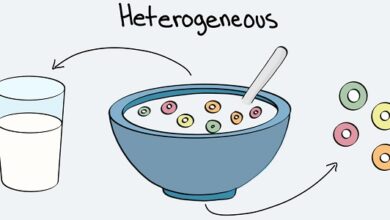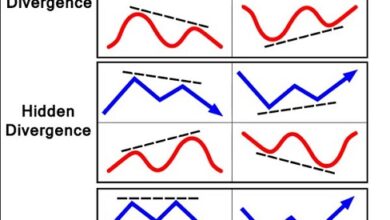What is Dispersion and types of dispersions
Dispersion
Dispersion is a scientific term to indicate a mixture of two or more substances, being able to classify these mixtures in homogeneous and heterogeneous.
Dispersion is present in our daily lives. For example: the mixture between water and sugar, gelatin, milk, etc. First, let’s study its components. All mixtures are made up of two components: the dispersion and the dispersant .
Types of dispersions
Every mixture is called dispersion. However, not all blends are the same. One way to classify them is by the size of the dispersed particles, that is, the solute.
According to the table below, there are three basic types of dispersions, which are true solutions, colloidal dispersion and suspensions:
- True solutions: they are mixtures of two or more substances with a uniform aspect, and their dispersed particles have a size smaller than 1nm. Therefore, they are invisible to the naked eye. The term true solution and not just solution is commonly used to distinguish solutions from colloidal dispersions.
In solutions, solute particles do not settle; cannot be separated from the solvent by filtration; they cannot disperse light; and not even with the aid of optical instruments such as ultramicroscopes can they be seen. Such factors already occur with colloids.
There are solid, liquid and gaseous solutions. See examples of each case:
1.1. Solid solutions: metallic alloys, such as bronze (mixture of copper and tin), 18K gold (gold and silver or gold and copper), brass (copper and zinc), etc.
1.2. Liquid solutions : sugar in water, oxygen dissolved in water, alcohol, hydrogen peroxide, among others;
1.3. Gaseous solutions: air.
- Colloidal or colloid dispersion: although, to the naked eye, colloidal dispersions are often confused with true solutions, due to their homogeneous appearance, some characteristics distinguish them. For example, deposits form under the action of a centrifuge and their particles can be retained by filters.
Colloidal dispersions are classified according to the dispersed and dispersion phases, generating five basic types of colloids, which are: sol, gel, emulsion, foams and aerosol. These types of colloids can also be solid or liquid, as shown in the examples below:
2.1. Sol: dissolved gelatin, toothpaste and ink;
2.2. Solid sol : glass and pigmented plastic;
2.3. Gel : gelatine, jellies, cheeses, toothpaste and dry paint;
2.4. Solid gel : ruby;
2.5. Emulsion: mayonnaise, milk, butter and creams;
2.6. Solid emulsion: margarine, opal and pearl;
2.7. Foams: soap and firefighting foam and whipped cream;
2.8. Solid foams : styrofoam, polyurethane, pumice, charcoal and marigold;
2.9. Liquid aerosol : mist and sprays;
2.10. Solid aerosol : smoke and dust.
- Suspensions: suspensions have particles with a diameter greater than 1000 nm. Thus, they can be seen with the naked eye or under a microscope. It is a heterogeneous mixture and its particles settle and are easily filtered.
Examples of suspensions: granite, water and sand, water and clay, etc.




